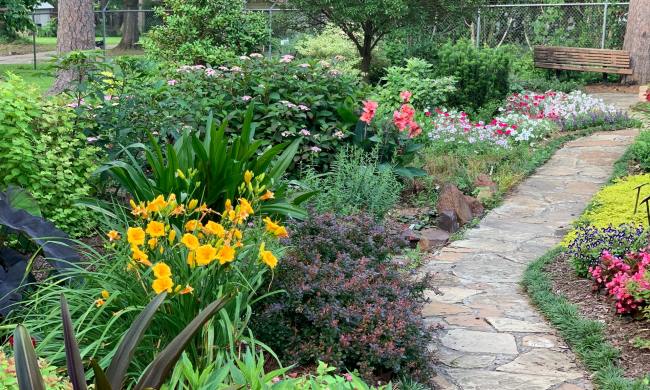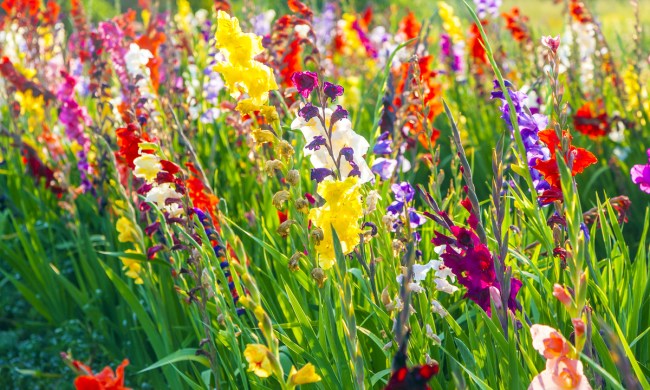Poppies are known for quite a few things. They have a beautifully simple shape, vibrant colors, and they are wildflowers. They also have a habit of spreading, and can escape from where they’re planted quite quickly. Unfortunately, most poppy species are also not native and can quickly become invasive due to their aggressive spreading habit. So, this may leave you wondering — what about the California poppy? Is it actually native to California, and how can you grow it at home? To answer these questions and more, we’ve put together this handy guide to California poppy plant care!
What makes California poppies different from other poppies?

California poppies have quite a bit in common with other poppy species. They grow quickly from seeds, have the classic poppy shape, and are vibrantly colored. One thing that sets them apart from other poppies is that color, though. Unlike the classic red poppy or the icy blue Himalayan poppy, California poppy flowers are a bright golden orange. The shade of orange can range from a honey color that’s almost yellow to a pure orange and can even include some darker, more sunset orange tones.
The other major difference between California poppies and other poppies is that California poppies are indeed native to the U.S. They can be found throughout the West Coast, including California, parts of Oregon and Washington, and south into Mexico. If you live on the West Coast, California poppies are well suited to your climate and will be a great fit in your garden. As an added bonus, they’re a favorite of many native pollinators.
Planting California poppy flowers

California poppies are easy to grow from seed, which is lucky because they don’t transplant well. They are best planted in fall or early spring for early blooms and long flowering periods. While you can plant them later in spring or early summer, you will typically see a shorter blooming period. Do not start them indoors and transplant them, as California poppies hate having their roots disturbed.
The ideal soil for California poppies is a well-draining and rich variety, but these flowers are remarkably hardy and will find a way to grow in almost any soil type. Your flowers may struggle more in slow-draining, dense soil, so consider amending it with compost before planting to loosen it up and improve the drainage.
Full sun is best for California poppies. The flowers grown in the shade can become leggy and struggle to thrive, making them more prone to pests and diseases. When it comes to actually planting your California poppy seeds, the process couldn’t be simpler. Just scatter the seeds across the area you want the flowers to grow. If you prefer a cleaner look, you can lay the seeds in a row, but avoid covering them with soil.
California poppy care

Once they’re planted, California poppies require little to no care. As the seeds germinate and sprout, water them when the soil is dry. Avoid watering your California poppy plants if the soil is still wet or if you expect rain shortly. You do not need to fertilize your California poppies either, and, in fact, fertilization can sometimes cause more problems than it fixes. Poppies are not heavy feeders, and they do quite well in poor soil. Overfertilization can lead to a build up of nutrients or salts in the soil, which can burn your plants over time. You also don’t need to worry about pests, as California poppies are resistant to most pests.
You do not need to deadhead your California poppies, but you can if you prefer. Deadheading or removing the wilted flowers from the plant encourages the plant to grow new flowers to replace the old. Deadheading also prevents the flower from developing and dropping seeds. California poppies make good cut flowers, and they can be dried or pressed for gorgeous decorations.
Do California poppies spread?

Like other poppy species, California poppies will spread rapidly. California poppies primarily spread by self-seeding, meaning they drop seeds that sprout on their own. If you live in their native range, you don’t need to worry about them becoming invasive. They do not spread as aggressively as non-native poppies, and they are a natural part of the local ecosystem. However, if you want to keep them from spreading into certain parts of your garden, the best way to do so is to limit the number of seeds the plant produces by deadheading spent flowers. You can also uproot California poppy plants that pop up in places you don’t want them to grow.
California poppies are gorgeous native flowers that are easy to grow and incredibly beautiful to look at. If you live on the West Coast and feel like your garden could use a burst of bright color, this is certainly an excellent flower to choose.




